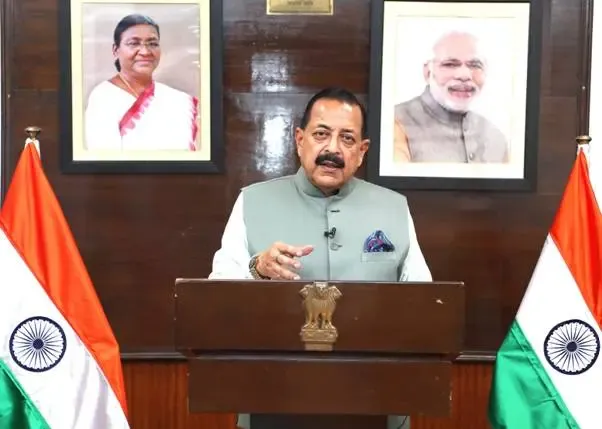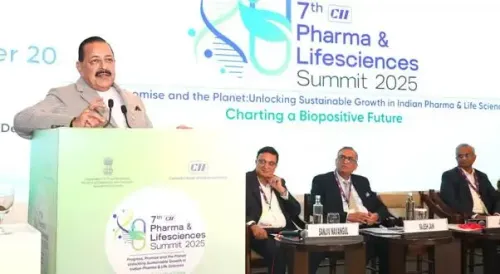How Can Healthcare Increase Private Sector Involvement to Meet Global Standards?

Synopsis
Key Takeaways
- Shift from government funding to private sector participation is essential.
- Collaboration between academia, research, and industry is crucial.
- Success stories in public-private partnerships highlight the potential for innovation.
- India's vaccine research showcases its global commitment.
- ANRF's funding model supports sustainable research.
New Delhi, Oct 24 (NationPress) The healthcare industry must shift from its heavy reliance on government financing and foster private sector involvement to reach global standards, stated the Union Minister of State (Independent Charge) for Science & Technology on Friday.
During the opening ceremony of the Diabetes Conference "TREAT-DM 2025 – Translational Research, Adiposopathy, Technology for Diabetes and Metabolic Diseases," he delivered his remarks via a virtual platform from the J N Tata Auditorium.
“The healthcare sector needs to transition away from excessive reliance on government funds and promote a culture of extensive private sector engagement to create a synergistic healthcare environment, philanthropy, and collaboration for achieving global benchmarks in healthcare research,” Singh expressed.
The Minister emphasized that the era of isolated efforts is behind us, asserting that collaboration among academia, research, and industry is essential for future progress.
“The distinctions between public and private sectors have increasingly blurred. Thanks to the reforms initiated by Prime Minister Modi, India has opened its space, nuclear, and biotechnology sectors to broader participation, yielding historical advancements,” he remarked.
He highlighted instances of public-private collaboration, such as the nation's inaugural successful indigenous gene-therapy trial for Haemophilia, conducted under the Department of Biotechnology in partnership with Christian Medical College, Vellore; as well as the first indigenously developed antibiotic Nafithromycin, effective against resistant respiratory infections, particularly in diabetic and immunocompromised patients, which emerged from collaborations between government and industry.
Singh reflected on India’s achievements in vaccine research and export.
“Our homegrown DNA vaccine and other vaccines have been distributed to nearly 200 countries. This showcases India’s dual commitment to self-reliance and global welfare – embodying the spirit of Vishwabandhu Bharat,” he stated.
The Union Minister also highlighted that India’s Anusandhan National Research Foundation (ANRF) is designed to secure sustainable funding with Rs 50,000 crore allocated over five years, of which Rs 36,000 crore will be sourced from non-governmental avenues. This marks a significant shift towards establishing a self-sustainable research model that aligns with global best practices.
Encouraging researchers to align their work with the vision for Viksit Bharat by 2047, the Minister articulated that “India’s advancements in science and technology will be propelled by innovation, self-reliance, and international collaboration.”










